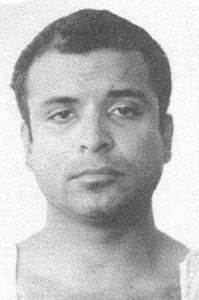From a convicted felon who fled justice in the US, Shaheed Roger Khan rose to become one of Guyana’s wealthiest citizens within a decade. Did the authorities pay any attention to his swift climb up the economic ladder?
 Khan, who first gained notoriety here in 2002 following his arrest after he was found along with two others with a cache of arms and sophisticated communication equipment at Good Hope, East Coast Demerara, had accumulated enormous wealth within a short period of time.
Khan, who first gained notoriety here in 2002 following his arrest after he was found along with two others with a cache of arms and sophisticated communication equipment at Good Hope, East Coast Demerara, had accumulated enormous wealth within a short period of time.
However, with a weak Financial Intelligence Unit (FIU) and an inept police force, no one investigated how he grew so fast and strong financially in an economy that has remained stagnant for years.
He now stands charged with an 18-count indictment of distribution, importation and possession of cocaine and engaging as a principal administrator, organizer and leader of a continuing criminal enterprise in New York and elsewhere. He is accused also of heading a powerful, violent cocaine trafficking organisation out of Guyana and faces a maximum penalty of life in prison if convicted.
Observers believe the authorities here knew of Khan’s narcotics-related activities long before the US first named him in one of its drug strategy country reports.
In an earlier motion filed by his attorney in New York, it was revealed that during the late 1980s and early 1990s Khan was living in the US and attending Norwich University in Vermont. On or about November 29, 1993 he was arrested on a federal criminal complaint and the next month charged in a one-count indictment with possession of a firearm by a convicted felon in violation of Title 18 US Code 922. He was subsequently released on a US$1,000 bond following his initial appearance in court, and skipped the jurisdiction, returning to Guyana.
He never went back voluntarily to the US. Around March 30, 1994, the US District Court for the district of Vermont issued a warrant for Khan’s arrest and on October 28, 1994, his bond was ordered forfeited.
His lawyer said that on his return to Guyana in 1993 or early 1994, Khan became an “enterprising innovative entrepreneur.” He founded and operated a number of successful businesses including, but not limited to, a housing development and construction company, a carpet cleaning service, a nightclub and a timber mill.
Guyanese first became aware of Khan when he, Haroon Yahya and policeman Sean Belfield were detained on December 4, 2002 by an army patrol and turned over to the police following the discovery of a cache of arms and sophisticated electronic surveillance equipment in a pick-up at Good Hope, East Coast Demerara.
When they were caught, Khan and his partners had told law enforcement officials that they were in search of Shawn Brown and the rest of the prison escapees who had fled the Camp Street prison earlier that year. The men were later charged with possession of arms and ammunition and placed on $500,000 bail each.
The charges were subsequently dismissed by Magistrate Jerrick Stephney at the Sparendaam Magistrate’s Court the next year. Not much had been known about Khan prior that incident, but persons close to him told this newspaper that as soon as he fled the US jurisdiction and returned to Guyana he had allegedly begun associating with drug dealers. From 1994 when he fled from the US to 2002 when he was caught with the arms, Khan had already established himself as businessman and had also secured government contracts working on a building project at the University of Guyana, one of his local attorneys disclosed. Between 2002-2006 Khan kept a relatively low profile, although according to one of the statements he released when local police had set about to arrest him, during this time he was involved in crime-fighting. His lawyers told the court in New York that following the February 23, 2002 jailbreak when the escapees went on a killing spree he responded to the crisis, providing financial and logistical support to the government. “During the crime spree in 2002, I worked closely with the crime-fighting sections of the Guyana Police Force and provided them with assistance and information at my own expense.
My participation was instrumental in curbing crime during this period,” Khan said in one of his media statements.
The US has since alleged that a group he had set up was responsible for the murders of over 200 people during that period. Apart from the period immediately prior to Khan’s departure from Guyana for Suriname in 2006 because he was being sought by local law enforcers, his only other encounter with the police after the Good Hope incident came when properties owned by him were raided.
In 2005, a team of policemen descended on Master’s Touch Carpet Cleaners located at Second Street, Bel Air Village and arrested several of his bodyguards and seized cocaine and arms. The case against the men collapsed in court and they were all set free.
Khan, still in his 30s and with no record of a transfer of assets from relatives to him was able to acquire Kaow Island in the Essequibo River; own a large timber company, called Aurelius; a large housing development project, called Dream Works with houses at Farm, East Bank Demerara and at Blankenburg on the West Coast Demerara. Shortly before he was arrested, he was also the owner of the now defunct Avalanche nightclub and was said to have provided seed capital to a number of small businesses operating along Regent Street.
In a less than strong economy Khan owned a large home at D’Aguiar Park and employed more than two dozen men to provide security for him.





